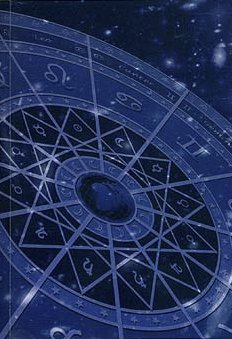Naradasamhita, Nāradasaṃhitā, Narada-samhita: 3 definitions
Introduction:
Naradasamhita means something in Hinduism, Sanskrit. If you want to know the exact meaning, history, etymology or English translation of this term then check out the descriptions on this page. Add your comment or reference to a book if you want to contribute to this summary article.
In Hinduism
Jyotisha (astronomy and astrology)
Source: Google Books: Studies in the History of the Exact Sciences (Astronomy)Nāradasaṃhitā (नारदसंहिता) is the name of an astrological work.—The ritual connected with the setting up of the water clock and its invocation is described, albeit briefly, in an unpublished manuscript entitled Ghaṭikāyantraghaṭanāvidhi. This manuscript cites Nārada as the authority for this ritual. The extant version of the Nāradasaṃhitā (before 1365) does describe the ritual but the wording is somewhat different.

Jyotisha (ज्योतिष, jyotiṣa or jyotish) refers to ‘astronomy’ or “Vedic astrology” and represents the fifth of the six Vedangas (additional sciences to be studied along with the Vedas). Jyotisha concerns itself with the study and prediction of the movements of celestial bodies, in order to calculate the auspicious time for rituals and ceremonies.
Languages of India and abroad
Sanskrit dictionary
Source: Cologne Digital Sanskrit Dictionaries: Aufrecht Catalogus Catalogorum1) Nāradasaṃhitā (नारदसंहिता) as mentioned in Aufrecht’s Catalogus Catalogorum:—bhakti. Oudh. Viii, 28. Oppert. Ii, 4031. 4679. Rice. 94.
2) Nāradasaṃhitā (नारदसंहिता):—music. Quoted by Nārāyaṇadeva Oxf. 201^a. Nāradasaṃhitāyāṃ Catvāriṃśacchatarāganirūpaṇa. Burnell. 60^b.
—Pañcamasārasaṃhitā. L. 322. 540.
3) Nāradasaṃhitā (नारदसंहिता):—jy. W. p. 257. B. 4, 150. Ben. 30. Kāṭm. 10. Pheh. 9 (Nāradasiddhānta). Rādh. 34. Oudh. Viii, 16. Xiii, 60. Np. V, 202. Ix, 46. Rice. 32. Peters. 2, 193. Sūcīpattra. 17. Mayūracitra. Pheh. 8.
4) Nāradasaṃhitā (नारदसंहिता):—jy. [Bhau Dāji Memorial] 33. Stein 164.
5) Nāradasaṃhitā (नारदसंहिता):—jy. Ulwar 1823.
6) Nāradasaṃhitā (नारदसंहिता):—astrol. Śg. 2, 189 p. 146 (inc.).
Source: Cologne Digital Sanskrit Dictionaries: Monier-Williams Sanskrit-English DictionaryNāradasaṃhitā (नारदसंहिता):—[=nārada-saṃhitā] [from nārada] n.
Sanskrit, also spelled संस्कृतम् (saṃskṛtam), is an ancient language of India commonly seen as the grandmother of the Indo-European language family (even English!). Closely allied with Prakrit and Pali, Sanskrit is more exhaustive in both grammar and terms and has the most extensive collection of literature in the world, greatly surpassing its sister-languages Greek and Latin.
See also (Relevant definitions)
Partial matches: Narada, Samhita.
Full-text (+12): Naradapancaratra, Caula, Narada, Utsedha, Ayata, Lagna, Jalayantra, Jyotishika, Tandulastha, Abhaya, Purvokta, Prayatna, Yantrottama, Gandha, Akshata, Kalasadhana, Vastra, Vastrayugma, Pushpa, Mritpatra.
Relevant text
Search found 3 books and stories containing Naradasamhita, Nāradasaṃhitā, Narada-samhita, Nārada-saṃhitā; (plurals include: Naradasamhitas, Nāradasaṃhitās, samhitas, saṃhitās). You can also click to the full overview containing English textual excerpts. Below are direct links for the most relevant articles:
Karmic Astrology—a Study (by Sunita Anant Chavan)
Part 2.2.1 - Gaṇita of the Veda and Vedāṅga Period (Introduction) < [Chapter 2 - Jyotiḥśāstra and the Concept of Karman]
Part 5.4 - Correlation of Jyotiṣa and Karma in the Varāha period < [Chapter 3 - Development of Jyotiḥśāstra and Karman in the Literature]
Significance of the Moon in Ancient Civilizations (by Radhakrishnan. P)
2. Envision of Astrology in Vedic Sense < [Chapter 5 - Adoration of the Sun and Moon]
Amarakoshodghatana of Kshirasvamin (study) (by A. Yamuna Devi)
Units of time < [Chapter 3 - Social Aspects]